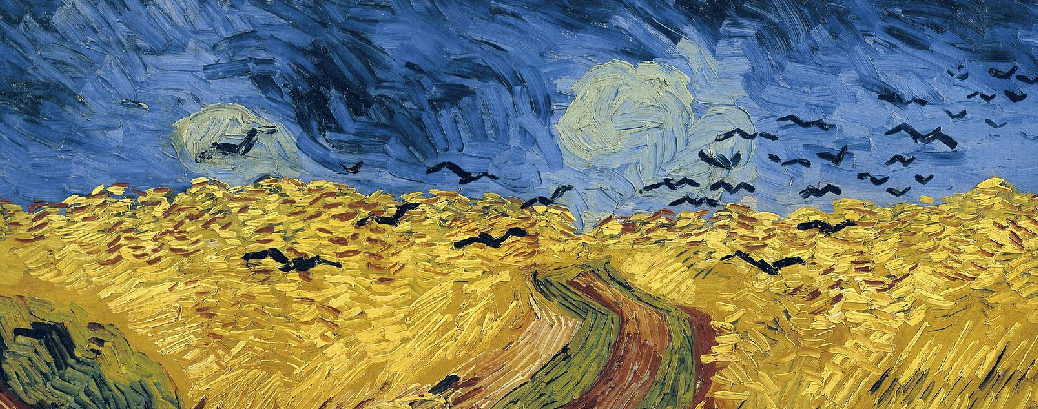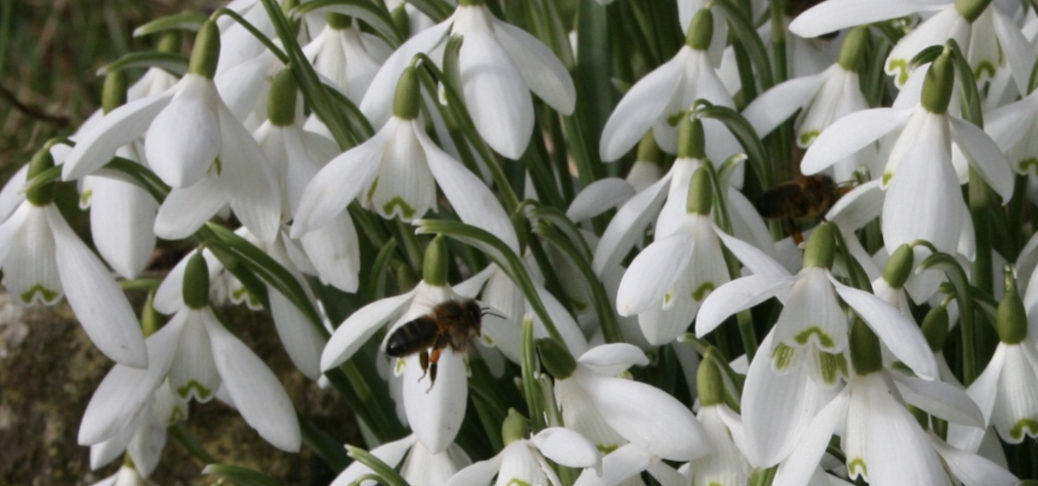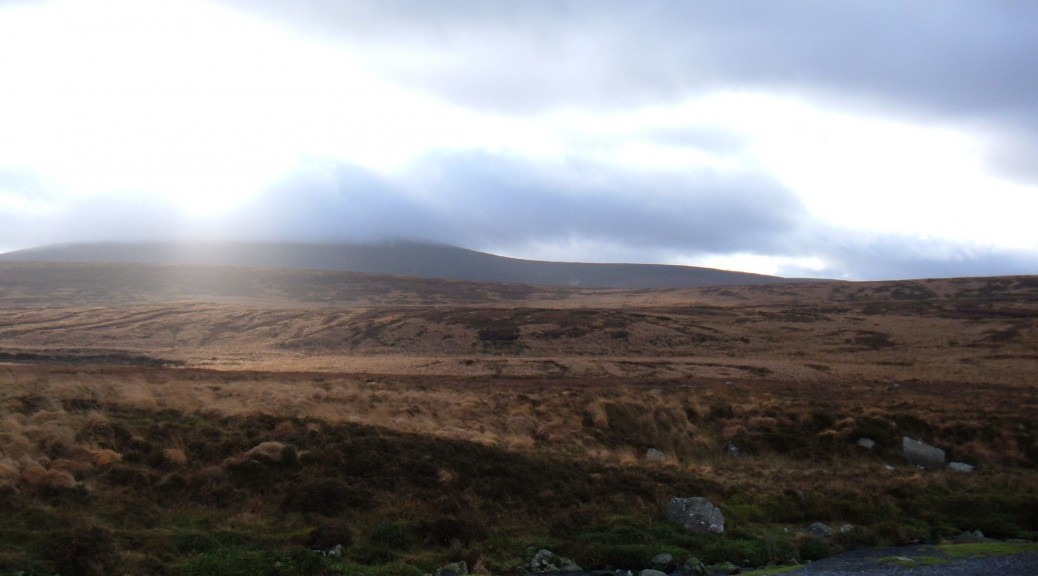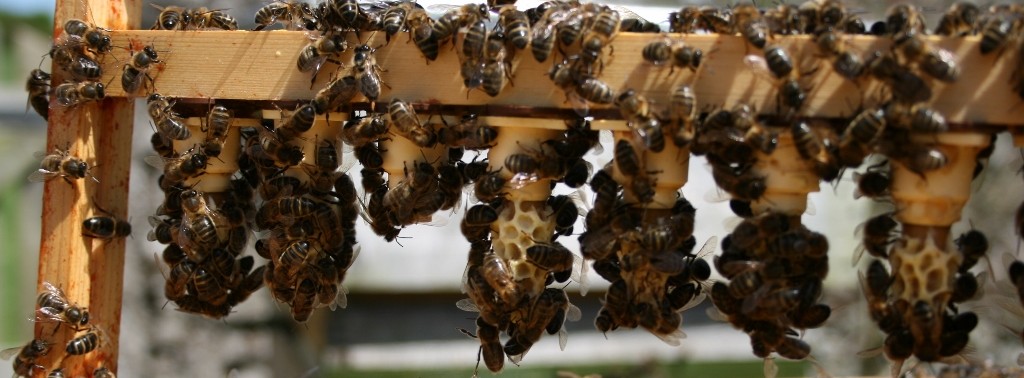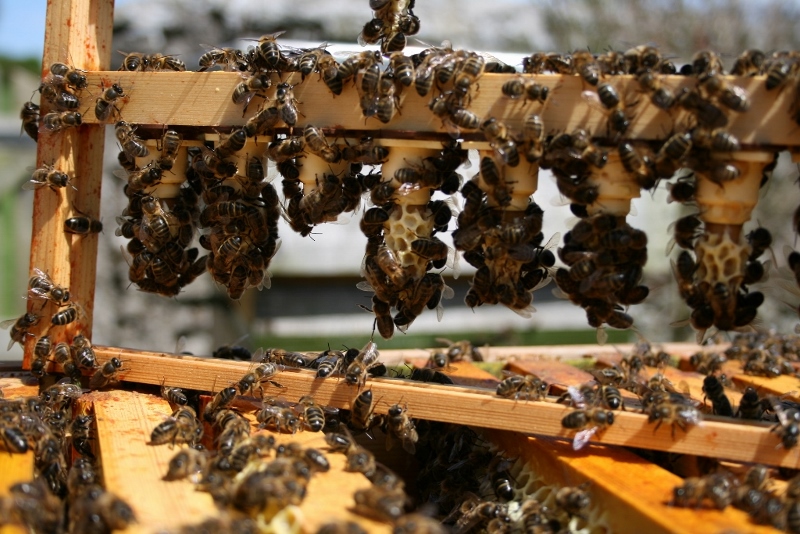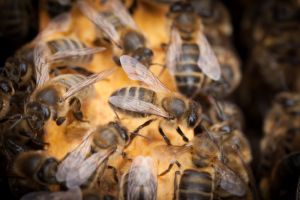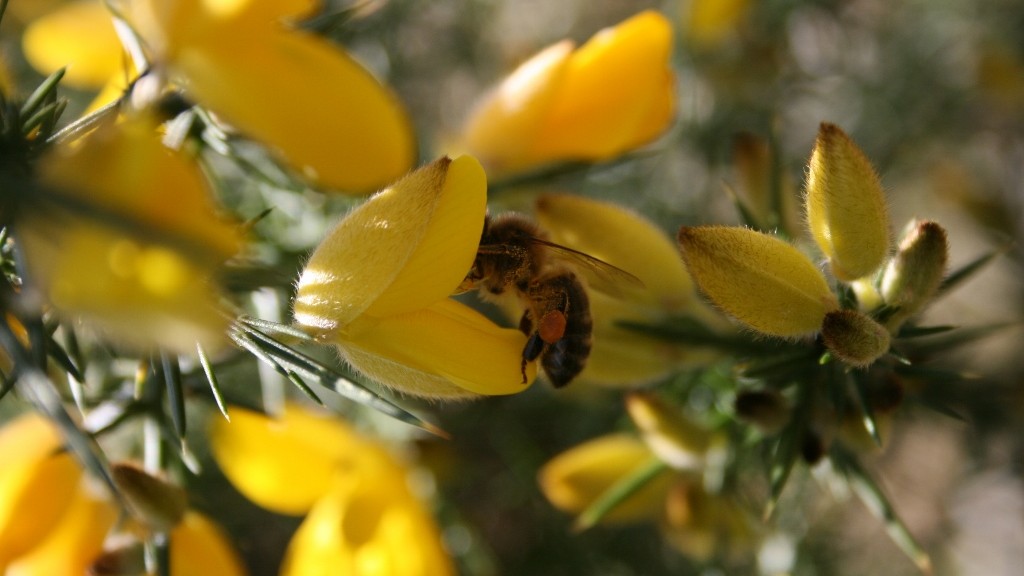The picture above is by Vincent Van Gogh (obviously says you), it lives in the Van Gogh Museum, Amsterdam and is called ‘Wheatfield with Crows’. It was painted in 1890 – possibly his last picture. Vincent didn’t know about climate change or intensive agriculture; if he had, he would probably have cut the other ear off and left the crows out. Continue reading Ireland Pollinator Plan 2015-2020
Tag Archives: Entomology
Pollination and Honey Bees
So, why are honey bees such important pollinators?
From an ecological point of view there are at least 3 reasons:
- Honeybees have evolved in tandem with certain flowers and they have adapted to facilitate each other;
- One bee is able to rapidly communicate the location of a pollen/nectar source to the whole hive and an army sets out;
- The bees then concentrate faithfully on that flower species until the pollen runs out or the nectar dries up, at which point the job of pollination is accomplished.
These features obviously make the honey bee important from an agricultural/commercial point of view. In addition, hives of bees are mobile and can be moved from crop to crop – an arrangement which can suit bees, farmers and beekeepers so long as everyone has a bit of respect. Wouldn’t that be great?
But some detail: Continue reading Pollination and Honey Bees
Heather Ecosystem
When beekeepers think heather, they think weather and ‘Will it ever stop bloody raining?’
Or you might wonder – ‘IS there a flow at all?’ Because often there isn’t and you can never tell in advance if it will or if it won’t. Heather honey is the most bewitching and frustrating of all honeys; if you can get a crop of sections or cut comb honey it’s close to heaven and so costly and disappointing when it fails.
But there’s more to it than the weather. It’s the ecology – Stupid! Continue reading Heather Ecosystem
Bee Basics – Metamorphosis
Introduction
There are three castes in a honeybee colony: the queen, the worker and the drone. There is only one queen per colony and she will live for about three years. During her reign there are numerous workers although the numbers of workers per colony fluctuates with the seasons reaching a peak in early summer and dwindling to a minimum in the depths of winter. In the early summer the colony begins to produce drones who emerge to live the life of Reilly until the end of the season when they are forcibly evicted to die in hungry heaps in the long grass.
The details of the control of the complicated demographics of the honeybee colony are for another day! Only the mechanisms of how the colony manages to produce three castes from two sorts of egg will be dealt with below. Continue reading Bee Basics – Metamorphosis
Carniolan Bee
The Carniolan bee also known as Apis mellifera carnica or A.m.carnica for short has its origins in Eastern Europe and is therefore adapted to a continental climate with cold hard winters and long hot summers. It is now the main bee in Germany.
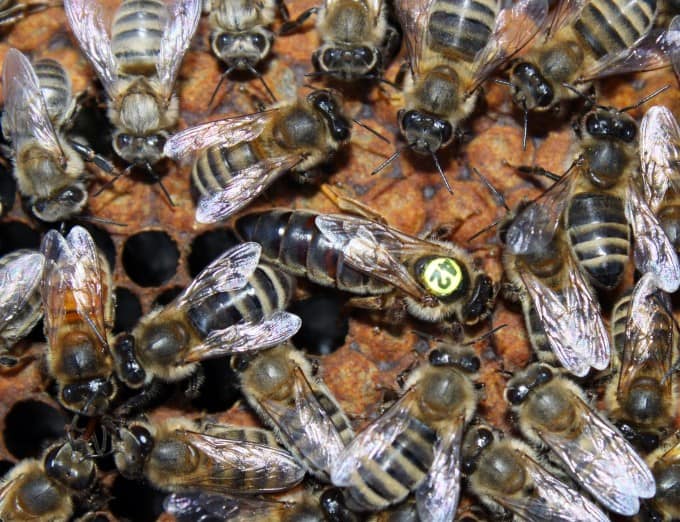
Photo from https://beeinformed.org/2012/04/queen-bee-identification/
It is also known as the Grey bee because 3 segments of its abdomen are broadly covered in a thick pelt of short grey hairs which partially conceals the underlying dark abdomen giving it a frosted look. Photo from queen bee identification article on www.beeinformed.org
It is similar to the Italian bee in that it is a medium sized bee with a long narrow body and limbs and it also has the same long proboscis which enables it to make full use of the red clover – an important forage crop in Europe. Here in Ireland, your bees will have to be quick off the mark if you want to get to the clover before that army of sacred cows known as the ‘Dairy Industry’
Coming, as it does, from a region where summers are predictably long and warm, it has a strong swarming tendency. In its native range, winters are long and cold so it does fares better over winter than the Italian bee, being very thrifty with a smaller brood nest. In spring, the build-up can be very rapid indeed an adaptation to take advantage of an early flow. If there is one…
Like all honey bee subspecies in their pure form, Carniolan bees can have a gentle nature which is good. When matings are mixed, aggression can be expected.
Here in the far west of Europe we have our own native bee, the Irish native honey bee, Apis mellifera mellifera, which has evolved over thousands of years and ‘knows’ how to cope with whatever this clammy, wet and unpredictable Irish climate can throw at it.
If you are thinking of importing Carniolan bees – or buying from somebody else who imports Carniolan or any other bees for that matter – remember that you will be helping to erode the genetics of the Irish bee. Ask yourself – why would you want to do that? Wouldn’t you prefer to be a proper beekeeper? Learn to work with your locals and rear your own queens?
Lots of information on that here : Queen Rearing
And don’t forget – small Hive Beetle is out there waiting for somebody just like you. You don’t want to find yourself in front of god explaining why you destroyed your neighbour’s native bee breeding programme and at the same time introduced the most devastating bee parasite to Ireland now do you?
Best not mention you knew what you were doing.
Click here for more on Small Hive Beetle
Click here for more about the Native Irish Bee
Click here for updated list of Irish Native Honey Bee suppliers
Click here for more about the Italian bee
Click here for the Buckfast bee
Copyright © Beespoke.info, 2014. All Rights Reserved.
Buckfast Bee
The Buckfast Bee is named after Buckfast Abbey in Devon, in England, where it was first bred by famous bee breeder Brother Adam.

Brother Adam (Karl Kehrle 1898-1996) came to Buckfast Abbey from Germany at the age of 12 and began to assist the beekeeper there. In 1916, 30 of the 46 beehives at the Abbey were wiped out by Isle of Wight disease, now recognised as Acarine – a parasitic mite which moves in and occupies the windpipes of bees. Continue reading Buckfast Bee
Italian Bee
The Italian bee – also known as Apis mellifera ligustica or A.m.ligustica for short – is perfectly adapted to the Italian climate and flora and a very glamorous bee altogether.
As you can see from this photo, borrowed from http://beeinformed.org, it is mainly light brown in colour and strikingly striped with dark brown on the abdomen.
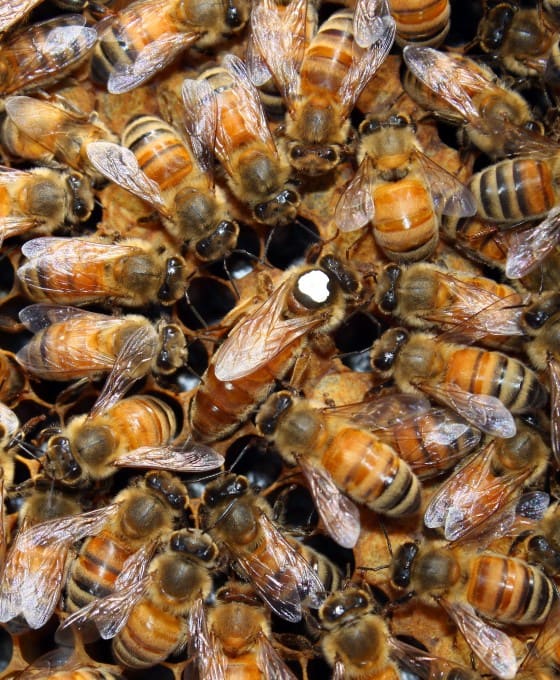
Irish Native Bee
The Irish native bee has the Latin name Apis mellifera mellifera or A.m.m for short. It is also known as the Dark bee.
How to recognise the Irish bee…
…these are some of my native Irish bees. Click the photo for a better view.
Here are some of the characteristics to watch out for when selecting breeding stocks: Continue reading Irish Native Bee
Blooming Gorse
The gorse is in bloom early this year, although what is it they say – ‘When gorse is out of bloom, kissing is out of fashion’ – is that it?
Look out for orange/brown pollen loads – along with the brighter orange from the snowdrops.
In fact, when the weather does warm up and the bees are active and bringing in that brown pollen it is worth going out to watch them working the gorse because the flower is specially designed to make best use of the bees for pollination. Enjoy the strong coconut scent of the flowers while you’re at it. Continue reading Blooming Gorse
Pollination
Any warm sunny days in spring the bees will be working the snowdrops so watch out for orange/brown pollen loads – see photo above.
For the bees, this fresh pollen and perhaps a little nectar heralds the beginning of a new year and may help nudge the queen into lay.
From the point of view of the snowdrops – the bees are welcome pollinators. Pollination is the transfer of pollen from the male parts of one flower to the female parts or another flower. Wind pollination is where male flowers or catkins of a plant, hazel for example, release massive amounts of pollen into the air where it is carried on the wind to the female flowers. Insect pollination is where the same job is carried out by an insect. To attract insects, the flowers of such plants often exude nectar.
That’s the bare bones of it and that might be enough. For the nitty gritty though – read on… Continue reading Pollination
